The risks of stagnant water in buildings that aren’t always in use (looking at you, summer holidays!)
Every summer, as the final bell rings and students pour out of schools for their long-awaited holidays, something far less celebratory begins to happen behind the scenes as water sits idle in pipes, tanks, and outlets throughout these buildings. For weeks, sometimes months, this stagnant water creates ideal conditions for a microscopic threat to multiply: Legionella bacteria.
And it’s not just schools. Town halls that close over bank holiday weekends, community centres with sporadic usage patterns, buildings with reduced summer hours all face the same hidden danger.
At HCS Water Treatment, part of Premier Technical Services Group Ltd (PTSG), our work with educational institutions like The Glasgow Academy has given us firsthand insight into the unique water safety challenges these buildings face. The inconvenient truth is that many schools and public buildings might indeed be Legionella time bombs, but they don’t have to be.
Why Schools and Public Buildings Are Particularly Vulnerable
Several factors combine to make educational and public buildings particularly susceptible to Legionella colonisation:
1. The Calendar Conundrum
The academic calendar creates prolonged periods of low or no water usage:
- Six-week summer holidays (or longer in some institutions)
- Two-week Christmas breaks
- Easter and half-term closures
- Weekend shutdowns in buildings used primarily Monday-Friday
Each closure period allows water to sit stagnant in pipes and storage tanks, perfect conditions for bacterial growth.
2. Partial Occupancy Patterns
Even when open, usage patterns create pockets of stagnation:
- Rooms used only for specific activities (art rooms, science labs)
- Areas used seasonally (heating systems in summer)
- Wings or floors that might be closed when not needed for full capacity
- Facilities reserved for occasional use (sports changing rooms, performance spaces)
These irregular usage patterns create “dead zones” in water systems where bacteria can establish colonies undisturbed.
3. Building Complexity
Many educational and public buildings have evolved over time, creating complex water systems:
- Multiple buildings of different ages connected to the same water supply
- Additions and extensions creating complicated pipework routes
- Historical buildings with outdated plumbing systems
- Buildings designed for different purposes now repurposed
- Various water uses from drinking fountains to showers to laboratory taps
This complexity creates numerous points where temperature control might fail and bacteria can establish colonies.
4. Budget and Resource Constraints
The practical realities of public sector funding create additional challenges:
- Limited maintenance budgets stretched across multiple priorities
- Reduced staffing during holiday periods when risk is highest
- Competing health and safety demands
- Pressure to reduce energy costs potentially affecting water heating
- Knowledge gaps resulting from staff turnover or outsourcing
Case Studies: When School’s Out, Bacteria’s In
The consequences of inadequate water management in schools and public buildings are not theoretical. Consider these real examples:
The Primary School Return-to-School Crisis
A primary school in the Midlands reopened after summer holidays without implementing a proper water management strategy during the six-week closure. Within days, a maintenance issue with the hot water system was reported. Testing revealed dangerously high levels of Legionella throughout the building. The school was forced to:
- Close for an additional week for emergency disinfection
- Provide alternative arrangements for hundreds of students
- Deal with anxious parents and negative local press
- Face formal improvement notices from health authorities
While thankfully no illness occurred, the disruption, cost, and reputational damage were significant.
The Local Authority Swimming Pool Incident
A community swimming pool managed by a local authority experienced reduced usage during summer months when outdoor leisure options were more popular. The reduced circulation in shower facilities led to a Legionella outbreak that affected three regular users. Investigation revealed:
- Inadequate temperature monitoring
- Showers in the group changing rooms that sometimes went unused for days
- No systematic flushing programme for underused outlets
- Staff unaware of their responsibilities regarding water safety
The resulting legal case cost the local authority over £200,000 in compensation and legal fees, not to mention the operational and reputational impact.
The University Accommodation Outbreak
Student accommodation blocks sat largely empty during summer holidays, with minimal water usage throughout. Upon students’ return in September, several cases of Legionnaires’ disease were reported. The investigation found:
- No summer flushing programme for vacant rooms
- Temperature control issues in the hot water system
- Inadequate pre-return water system checks
- Insufficient risk assessment for seasonal occupancy patterns
Beyond the human cost of illness, the university faced significant litigation, negative national press coverage, and a dramatic drop in accommodation applications the following year.
The Regulatory Framework: What Schools and Public Buildings Must Do
Educational institutions and public buildings in the UK face clear legal obligations regarding Legionella control:
Health and Safety at Work Act 1974: Establishes the fundamental duty of care to employees, students, and visitors. This applies to all educational establishments and public buildings regardless of size or funding structure.
Control of Substances Hazardous to Health (COSHH) Regulations 2002: Specifically requires employers to control substances hazardous to health, including biological agents like Legionella.
L8 Approved Code of Practice: Provides practical guidance on meeting legal requirements. While not law itself, courts regard L8 as evidence of good practice, and deviations require justification.
HSG274 Technical Guidance: Offers detailed, practical advice on controlling Legionella in different types of water systems, with Part 2 particularly relevant to hot and cold water systems in buildings.
Department for Education Guidance: For schools specifically, the Department for Education provides additional guidance on water system management, including considerations during holiday periods.
Where Schools and Public Buildings Need to Focus
Effective Legionella control in educational and public buildings requires attention to several key areas:
1. Holiday Period Management
This is perhaps the most critical element for buildings with significant closure periods:
- Documented flushing programmes during holidays
- Clear assignment of holiday period responsibilities
- Temperature monitoring continuation during closures
- Pre-return system checks and potentially sampling
- Consideration of automated flushing systems for critical outlets
2. Variable Occupancy Strategies
For buildings with fluctuating or partial use:
- Identification and mapping of low-use outlets
- Regular flushing protocols for areas with intermittent use
- Consideration of removing rarely used outlets entirely
- Signage systems for maintenance teams to identify risk areas
- Integration of water safety into room booking and usage systems
3. Temperature Control Management
Maintaining appropriate temperatures throughout complex buildings:
- Robust monitoring regimes for sentinel outlets
- Clear procedures for reporting and addressing temperature failures
- Regular inspection of calorifiers and storage tanks
- Attention to pipe insulation, particularly in older buildings
- Awareness of seasonal temperature fluctuations in buildings without year-round climate control
4. Staff Training and Continuity
Addressing the challenges of staff turnover and seasonal variations:
- Role-specific training for facilities, cleaning, and administrative staff
- Clear documentation of water safety procedures
- Cross-training to address holiday coverage
- Integration of water safety into staff handover processes
- Simple visual guidance for non-technical staff
5. Multi-Building Management
For campuses or estates with multiple buildings:
- Comprehensive site-wide risk assessment
- Clear understanding of interconnected systems
- Consistent approach across all buildings
- Prioritisation based on risk level and usage patterns
- Centralised record-keeping and monitoring
The HCS Approach to Educational and Public Building Water Safety
At HCS Water Treatment, our experience with educational institutions like The Glasgow Academy has informed our specialised approach to water safety in these challenging environments. We understand both the technical requirements and the practical operational constraints facing schools and public buildings.
Our educational and public building water safety programme combines:
1. Education-Focused Risk Assessment
We conduct detailed risk assessments specifically designed for buildings with variable occupancy:
- Academic calendar implications for water safety
- Complex multi-building evaluation
- Identification of seasonal risk variations
- Operational challenges specific to education and public service environments
2. Calendar-Based Implementation
We align our approach with the operational realities of the academic year:
- Holiday period management plans
- Term-time monitoring programmes
- Pre-return verification protocols
- Services scheduled to minimise disruption to core activities
We collaborate with educational institutions to formulate robust water management plans with shared responsibility for the delivery of PPM tasks, understanding that these buildings operate on unique schedules.
3. Budget-Conscious Technology
Our technology solutions are adapted to the financial realities of the education and public sectors:
- Cost-effective remote monitoring options
- Scalable solutions for multi-building campuses
- Efficient record-keeping systems to minimise administrative burden
- Resource-optimised monitoring protocols
4. Stakeholder Training
We provide specialised training for the diverse stakeholders in educational and public buildings:
- Role-specific water safety guidance for facilities teams
- Awareness training for administrative and management staff
- Practical flushing and monitoring guidance for non-technical personnel
- Training resources designed for high-turnover environments
5. Sector-Specific Support
We understand the unique challenges of education and public service delivery:
- Guidance navigating regulatory requirements specific to schools and public buildings
- Support during inspections and audits
- Assistance with incident response if required
- Ongoing advice as buildings evolve or usage patterns change
Practical Next Steps: Holiday-Proofing Your Water Systems
If you’re responsible for a school, public building, or any facility with variable occupancy, here are essential actions to take before the next closure period:
1. Pre-Holiday Preparation
- Review and update your water system risk assessment
- Identify all outlets that will see reduced use
- Establish clear responsibility for holiday period water management
- Check temperature monitoring equipment is working correctly
- Consider taking pre-closure water samples as a baseline
2. During-Closure Management
- Implement a systematic flushing programme for all outlets
- Continue temperature monitoring of sentinel points
- Keep detailed records of all flushing and monitoring activities
- Consider additional monitoring for buildings with known risk factors
- Ensure emergency contact details are current for all contractors and responsible persons
3. Pre-Return Procedures
- Conduct thorough system flushing before reoccupation
- Check and record temperatures at sentinel outlets
- Visually inspect accessible parts of the system for issues
- Consider microbiological sampling for high-risk systems
- Address any issues identified before full reoccupation
4. Long-Term Strategic Planning
- Evaluate whether system modifications could reduce holiday risks
- Consider automated flushing technology for critical outlets
- Review staffing arrangements for holiday periods
- Develop a centralized record-keeping system for water safety
- Plan training updates to account for staff turnover
The Cost of Inaction: What’s Really at Stake
The consequences of inadequate water management in educational and public buildings extend far beyond regulatory compliance:
Human Cost
- Health impacts on vulnerable building users (including children)
- Potential long-term health consequences for affected individuals
- Staff absence due to waterborne illness
- Anxiety and concern among parents and building users
Operational Impact
- Unplanned building closures and service disruption
- Resource diversion to emergency response
- Damage to core educational or public service delivery
- Long-term changes to building usage patterns
Financial Implications
- Emergency remediation costs
- Potential litigation expenses
- Increased insurance premiums
- Resource-intensive compliance verification
- Reputational damage affecting funding or enrollment
Community Trust
- Loss of public confidence in health and safety management
- Erosion of trust from parents, staff and service users
- Negative local or national media coverage
- Long-term association with health risks
From Time Bomb to Example of Excellence
We began by asking if schools and public buildings are Legionella time bombs and for many, the uncomfortable answer might be “yes.” But it doesn’t have to remain that way.
With appropriate risk assessment, holiday management procedures, staff training and systematic monitoring, these buildings can transform from potential danger zones to examples of water safety excellence. The intermittent usage patterns that create risk can be managed effectively with the right approach.
At HCS Water Treatment, we believe that the challenges of managing water safety in educational and public buildings are entirely surmountable with the right expertise and commitment. Our experience with institutions like The Glasgow Academy demonstrates that comprehensive water safety is achievable, even within the practical constraints of the education sector.
The key is recognising that water safety in buildings with variable occupancy isn’t an afterthought or a simple compliance exercise it’s a fundamental aspect of responsibility to students, staff and the wider community.
Concerned about Legionella risk in your school, university or public building? Contact HCS Water Treatment today on 0141 212 7247 or email us at hello@hcsuk.org to discuss how our education-focused water safety services can help you manage the unique challenges of buildings with variable occupancy. Because the safety of your students, staff and visitors shouldn’t take a holiday, even when your building does.


